Inside the Playbook: Nebraska's Single High Defense vs Run Heavy Offenses
Originally Posted at Maize n Brew on July 26, 2013
Background
In the summer of 2013, Nebraska was coming off of one of their worst seasons in terms of run defense. Their DTs struggled mightily, their DEs weren't enough to counter the problems on the interior. This post discusses some of the basic Pelini defenses, and the adjustments he made when he realized his team struggled to stop the run. While Nebraska's run defense improved over the course of '13, these are still tactics that Pelini will go to in times of need.
For what it's worth, an added bit of information is that Pelini prefers to 2-gap his two DTs on the interior. By the time much of the film seen below was taken, it had appeared the Nebraska defensive staff had stopped asking the Nebraska DTs to 2-gap, and instead focus on maintaining a single gap. This simplification of the defense makes it easier for the DTs to do their job, but tends to make the defense as a whole a bit less effective.
Introduction
Over the years, Bo Pelini has proven to be one of the defensive minds in the game. With great success at Nebraska, Oklahoma, LSU, and then Nebraska again, he was able to transform middling defenses into stout defenses, and good defenses into great defenses. And last year was no... wait a sec... what the hell happened? Last year was, well... let's be honest, it was rough. I went back in search for something to write about here, what was going on to make this defense struggle, what changes needed to be made. But the answer is painfully obvious on film. The defensive tackles were atrocious last season for Nebraska; the defensive ends were alright, not great, and I'm honestly not sure how the linebackers were outside of not outstanding. Why can't I tell you? Because they had linemen in their face three yards downfield every time the other team ran the ball. And I said linemen for a reason. They didn't just have offensive linemen, they had their DTs pushed right back into them time and time again.
I could write a bit about some things Nebraska could do to be a little more effective on defense, the pressures they used at times last year to attempt to offset this problem, and some of the other adjustments. But what it boils down to if Nebraska wants to fix their defense, or even just make it so they don't give up 60+ points twice in a season, is they need to not suck at DT. If you not only can't win at the point of attack, but always flat out lose, it's not going to be pretty. Nebraska lost way too often last year, which is completely out of character for a Bo Pelini team. I'll still go over some of the things they can do compared to Pelini's comfort zone, but I also want to discuss some of the adjustments Pelini made to try to stop the run despite his DTs.
Pelini's Comfort Zone
It's hard to imagine Pelini is ever comfortable. As a human being, he's what some people would consider moderately intense. Those people would win some sort of award for understating reality or being unfortunately maladjusted to an extremely terrifying atmosphere. But Pelini a place where he goes to cuddle with soft things, and that's with his base 4-3 over defense (though in the past he has apparently favored the under front a little more).
Pelini's 4-3 over defense is much different than the Michigan State version I discussed previously however. If there's a coverage to run, Pelini will run it. From cover 2, to cover 3, to cover 4, to under 7 (basically a cover 6), to man under, to cover 1. Yes, he runs a ton of coverages on the back end, and this makes it difficult for defenses to run pass concepts to take advantage of certain things. But it also sometimes leaves to busts in his secondary. He can get away with it at times, but you can see confusion at some points that experienced teams will take advantage of. Teams like Iowa weren't able to, but teams like Georgia were. They also run quite a few fronts. The majority is a 4-3 over, but they run a lot of 4-3 under as well, not to mention some even fronts and 3-man fronts.
Over on mgoblog the a while back, Brian made reference to a Nick Saban segment on ESPN. In this segment, Saban discusses the unison between the back end and the front end. While all defensive coordinators think this way, perhaps two Pelini's favorite plays are great examples of this. In these plays he uses a back end coverage that works to gain numbers in the box and stop the run. These cover 1 variations, Pelini calls Cover 1"Vegas" and Zone X "Frisco".
Vegas
I've tried to label everything (click to embiggen the diagram). To put the diagram into a more cromulent context, I'll attempt to explain what's going on here.
Presnap, a safety is walking down to act as a WLB. This means that the other LBs shift: the WILL moves to a 10 technique (over the center), the MIKE moves to a 40 technique, and the SAM moves to a 9 tech. This doesn't necessarily mean front becomes an under front. Under refers to the defensive line. While this is often run with an under front, Nebraska more often will stay in their over front but push the SDE inside to a 5 technique, so it's really a quisi-under/over front, but think of it as the DTs setting the front. In an over front, the NT will be shaded to the weakside, and in an under front, the NT will be shaded to the strong side.
Against the pass, Nebraska is essentially running man coverage with a safety playing the deep middle third. The corners will follow the WRs, so if the WRs are aligned on the same side of the field, the CBs will follow.
Against 22 personnel (2 RBs, 2 TEs), the CB will simply align with the outside eligible receiver to his side. If that receiver goes in motion, the corner will follow and the coverage will remain the same on the other receivers. The SAM LB will match up with the next man inside, in the diagram above that's the TE. If there are 3 receivers to a side, the FS and SS will rotate and the SS will walk down and cover the #3 receiver. From a LB standpoint, against 21 personnel (2 RBs, 1 TE), the MIKE, WILL, and FS will work a 3-on-two. What this means is that if both RBs leak to the same side, the two defenders to that side will cover, if they go opposite directions, the two outside (MIKE and FS) will cover. Against single formations, the two LBs (MIKE and WILL) will run a 2-on-1, with the FS then covering either a slot or a TE to his side.
I'll discuss run responsibility in a second. First, let's look at the underneath zone variant of this cover 1 scheme.
Frisco
Now shown from a 4-3 under front, you can see the similarities in the two plays. There are slight differences outside of the underneath zone however. Here, the CB will not follow the receiver. Instead, if it is a formation such as twins (two WR on one side of the field), the SS will follow and match up with the WR in the slot. Meanwhile, the CB will drop back and cover the deep half on his side of the field. There are other adjustments, but that gets into specific formation types that we won't go into here.
Force-Lever-Spill
As I was writing this section to discuss this exact concept, I stumbled upon this page which already details what I was going to bring up. Here's an example picture and a clip from this page, follow the link for more in depth analysis.
There are two additional articles that discuss two of Pelini's favorite blitz packages: the Go 3 Seam, a zone blitz with two blitzers, usually the MIKE and a safety, and a dropping DE; and the spinner package, a match up man coverage on the outside and brinigng the house inside. Here are some other examples of those blitz schemes.
Go 3 Seam:
Spinner Blitz:
Some terminology stuff from the site for those wondering:
"Bronco" means that the DE is checking the backfield and zoning into seam/curl/flat coverage based off of the #2 receiver
"Nub" alerts a Bronco end lined up to a side where #1 is an attached TE that his #2 is in the backfield - or basically it lets him know there isn't a WR lined up outside and he has a defender covering the TE.
"Hook" will be an adjustment for three receivers to one side. Rather than cover the #2, the end will cover the #3 and hook zone.
"Peel" is when the DE is matched up with a back out of the backfield. He will peel off and cover the RB if the RB flares outside immediately. If the RB steps up, the DE will take go inside and prevent the RB from coming through the LOS.
"No way" is an inside move where the DE will bull rush to the inside number of the OT because another player has outside coverage or blitzing. If the outside guy is forced to peel off and cover, the DE will then work back outside to contain.
Pelini's Craptastic DT Adjustment Package
Have no fear, we still have an article. Here I'm going to reference some of the things Pelini will run to attempt to slow down the run game despite a weakness on the interior. For the most part, the idea is similar: you are throwing more bodies inside to prevent the O-line from getting push forward, and you are slanting the D-line to try to beat blockers to a spot to get penetration and blow up run plays without having to be as solid at the point of attack.
Bam Blitz
Imagine in this image that the T attacks the gap in front of him.
This play is a simple way of getting a LB to attack downhill at the snap. The slant from the inside DTs makes it so they can beat the O-lineman to the spot before getting pushed back, and O-lineman working to the next level will be met with air as the LB has already come crashing down.
The risk here is that you blitz away from the play. In this instance, you're hoping your D-line can beat the blocker to an area and then hold up. By messing with the blockers aiming point, there is a good chance you may be able to do so. But you've also weakened your base, and if the blocker can latch on he'll likely take you for a ride. This is a risk/reward, as it quickly fills every interior gap, but if someone gets kicked out, there isn't a whole lot of help behind it.
While this isn't a B gap blitz, here is an example of Nebraska shooting the A gap with the MLB for the same purposes.
Slant Cat
A CB blitz, or a Cat blitz as it's often called by defensive coaches, will also take advantage of slanting D-linemen. One of the benefits is that your 5-tech is crashing inside to the 3 gap, making it much more difficult for the O-line to release to the LB level. It also makes you stronger at the initial point of attack. Similar consequences can apply, but here, the Cat blitzer will often be unaccounted for. That means he has a free shot to force the ball carrier back inside if it comes to his side. The biggest weakness here is on the backend, where you are forced to play a cover 1 man under with a safety covering a WR. Run away from the blitz, and you essentially have a defender (Cat blitzer) doing nothing on the play.
Slant WILL
Pretty much the same play as described above, but now with an 8 man box and the WILL coming off the edge. Here's a clip of similar blitz, the Slant SAM.
Aside
For what it's worth, in the games I watched Nebraska ran a lot more 4-3 over than 4-3 under. However, they were getting gashed running the 4-3 over, and it wasn't until they switched to a 4-3 under that they started stacking up better. This is likely because the 4-3 under makes it harder for teams to double the DTs and drive them out to the LB level. Why then is Pelini running so much over? Likely because it matches up better from a pass coverage standpoint, but it also likely has to do with the teams I watched. Both Iowa and Penn St ran inside zone the majority of the time, with a lot of two TE formations. From an under front standpoint, you can often become outflanked quickly doing this. So Nebraska walked down a man once they started getting killed against the run. How the games ended can be explained by the ability of the team: Penn St could throw the ball and came back and won; Iowa couldn't and put up very few points despite dominating the LOS; Michigan had a shaken QB and a weak interior, essentially allowing for Nebraska to pressure like crazy and confuse the young QB.
Conclusion
Nebraska had a lot of struggles last year, and those struggles won't go away unless they get better up front. But Pelini isn't freaking out, at least not because he doesn't know adjustments that can be made (he's likely freaking out about something else though). Above I discussed some of the nuances of Pelini's defense: the base that he runs and some adjustment to teams successfully running the ball. The question is still about the DTs and whether they can perform next year or not. If not, Pelini will be forced to make some play call adjustments, and leave himself weak against the pass.
Background
In the summer of 2013, Nebraska was coming off of one of their worst seasons in terms of run defense. Their DTs struggled mightily, their DEs weren't enough to counter the problems on the interior. This post discusses some of the basic Pelini defenses, and the adjustments he made when he realized his team struggled to stop the run. While Nebraska's run defense improved over the course of '13, these are still tactics that Pelini will go to in times of need.
For what it's worth, an added bit of information is that Pelini prefers to 2-gap his two DTs on the interior. By the time much of the film seen below was taken, it had appeared the Nebraska defensive staff had stopped asking the Nebraska DTs to 2-gap, and instead focus on maintaining a single gap. This simplification of the defense makes it easier for the DTs to do their job, but tends to make the defense as a whole a bit less effective.
Introduction
Over the years, Bo Pelini has proven to be one of the defensive minds in the game. With great success at Nebraska, Oklahoma, LSU, and then Nebraska again, he was able to transform middling defenses into stout defenses, and good defenses into great defenses. And last year was no... wait a sec... what the hell happened? Last year was, well... let's be honest, it was rough. I went back in search for something to write about here, what was going on to make this defense struggle, what changes needed to be made. But the answer is painfully obvious on film. The defensive tackles were atrocious last season for Nebraska; the defensive ends were alright, not great, and I'm honestly not sure how the linebackers were outside of not outstanding. Why can't I tell you? Because they had linemen in their face three yards downfield every time the other team ran the ball. And I said linemen for a reason. They didn't just have offensive linemen, they had their DTs pushed right back into them time and time again.
I could write a bit about some things Nebraska could do to be a little more effective on defense, the pressures they used at times last year to attempt to offset this problem, and some of the other adjustments. But what it boils down to if Nebraska wants to fix their defense, or even just make it so they don't give up 60+ points twice in a season, is they need to not suck at DT. If you not only can't win at the point of attack, but always flat out lose, it's not going to be pretty. Nebraska lost way too often last year, which is completely out of character for a Bo Pelini team. I'll still go over some of the things they can do compared to Pelini's comfort zone, but I also want to discuss some of the adjustments Pelini made to try to stop the run despite his DTs.
Pelini's Comfort Zone
It's hard to imagine Pelini is ever comfortable. As a human being, he's what some people would consider moderately intense. Those people would win some sort of award for understating reality or being unfortunately maladjusted to an extremely terrifying atmosphere. But Pelini a place where he goes to cuddle with soft things, and that's with his base 4-3 over defense (though in the past he has apparently favored the under front a little more).
Pelini's 4-3 over defense is much different than the Michigan State version I discussed previously however. If there's a coverage to run, Pelini will run it. From cover 2, to cover 3, to cover 4, to under 7 (basically a cover 6), to man under, to cover 1. Yes, he runs a ton of coverages on the back end, and this makes it difficult for defenses to run pass concepts to take advantage of certain things. But it also sometimes leaves to busts in his secondary. He can get away with it at times, but you can see confusion at some points that experienced teams will take advantage of. Teams like Iowa weren't able to, but teams like Georgia were. They also run quite a few fronts. The majority is a 4-3 over, but they run a lot of 4-3 under as well, not to mention some even fronts and 3-man fronts.
Over on mgoblog the a while back, Brian made reference to a Nick Saban segment on ESPN. In this segment, Saban discusses the unison between the back end and the front end. While all defensive coordinators think this way, perhaps two Pelini's favorite plays are great examples of this. In these plays he uses a back end coverage that works to gain numbers in the box and stop the run. These cover 1 variations, Pelini calls Cover 1"Vegas" and Zone X "Frisco".
Vegas
Presnap, a safety is walking down to act as a WLB. This means that the other LBs shift: the WILL moves to a 10 technique (over the center), the MIKE moves to a 40 technique, and the SAM moves to a 9 tech. This doesn't necessarily mean front becomes an under front. Under refers to the defensive line. While this is often run with an under front, Nebraska more often will stay in their over front but push the SDE inside to a 5 technique, so it's really a quisi-under/over front, but think of it as the DTs setting the front. In an over front, the NT will be shaded to the weakside, and in an under front, the NT will be shaded to the strong side.
Against the pass, Nebraska is essentially running man coverage with a safety playing the deep middle third. The corners will follow the WRs, so if the WRs are aligned on the same side of the field, the CBs will follow.
Against 22 personnel (2 RBs, 2 TEs), the CB will simply align with the outside eligible receiver to his side. If that receiver goes in motion, the corner will follow and the coverage will remain the same on the other receivers. The SAM LB will match up with the next man inside, in the diagram above that's the TE. If there are 3 receivers to a side, the FS and SS will rotate and the SS will walk down and cover the #3 receiver. From a LB standpoint, against 21 personnel (2 RBs, 1 TE), the MIKE, WILL, and FS will work a 3-on-two. What this means is that if both RBs leak to the same side, the two defenders to that side will cover, if they go opposite directions, the two outside (MIKE and FS) will cover. Against single formations, the two LBs (MIKE and WILL) will run a 2-on-1, with the FS then covering either a slot or a TE to his side.
I'll discuss run responsibility in a second. First, let's look at the underneath zone variant of this cover 1 scheme.
Frisco
Force-Lever-Spill
As I was writing this section to discuss this exact concept, I stumbled upon this page which already details what I was going to bring up. Here's an example picture and a clip from this page, follow the link for more in depth analysis.
Go 3 Seam:
Some terminology stuff from the site for those wondering:
"Bronco" means that the DE is checking the backfield and zoning into seam/curl/flat coverage based off of the #2 receiver
"Nub" alerts a Bronco end lined up to a side where #1 is an attached TE that his #2 is in the backfield - or basically it lets him know there isn't a WR lined up outside and he has a defender covering the TE.
"Hook" will be an adjustment for three receivers to one side. Rather than cover the #2, the end will cover the #3 and hook zone.
"Peel" is when the DE is matched up with a back out of the backfield. He will peel off and cover the RB if the RB flares outside immediately. If the RB steps up, the DE will take go inside and prevent the RB from coming through the LOS.
"No way" is an inside move where the DE will bull rush to the inside number of the OT because another player has outside coverage or blitzing. If the outside guy is forced to peel off and cover, the DE will then work back outside to contain.
Pelini's Craptastic DT Adjustment Package
Have no fear, we still have an article. Here I'm going to reference some of the things Pelini will run to attempt to slow down the run game despite a weakness on the interior. For the most part, the idea is similar: you are throwing more bodies inside to prevent the O-line from getting push forward, and you are slanting the D-line to try to beat blockers to a spot to get penetration and blow up run plays without having to be as solid at the point of attack.
Bam Blitz
Imagine in this image that the T attacks the gap in front of him.
This play is a simple way of getting a LB to attack downhill at the snap. The slant from the inside DTs makes it so they can beat the O-lineman to the spot before getting pushed back, and O-lineman working to the next level will be met with air as the LB has already come crashing down.
The risk here is that you blitz away from the play. In this instance, you're hoping your D-line can beat the blocker to an area and then hold up. By messing with the blockers aiming point, there is a good chance you may be able to do so. But you've also weakened your base, and if the blocker can latch on he'll likely take you for a ride. This is a risk/reward, as it quickly fills every interior gap, but if someone gets kicked out, there isn't a whole lot of help behind it.
While this isn't a B gap blitz, here is an example of Nebraska shooting the A gap with the MLB for the same purposes.
Slant Cat
For what it's worth, in the games I watched Nebraska ran a lot more 4-3 over than 4-3 under. However, they were getting gashed running the 4-3 over, and it wasn't until they switched to a 4-3 under that they started stacking up better. This is likely because the 4-3 under makes it harder for teams to double the DTs and drive them out to the LB level. Why then is Pelini running so much over? Likely because it matches up better from a pass coverage standpoint, but it also likely has to do with the teams I watched. Both Iowa and Penn St ran inside zone the majority of the time, with a lot of two TE formations. From an under front standpoint, you can often become outflanked quickly doing this. So Nebraska walked down a man once they started getting killed against the run. How the games ended can be explained by the ability of the team: Penn St could throw the ball and came back and won; Iowa couldn't and put up very few points despite dominating the LOS; Michigan had a shaken QB and a weak interior, essentially allowing for Nebraska to pressure like crazy and confuse the young QB.
Conclusion
Nebraska had a lot of struggles last year, and those struggles won't go away unless they get better up front. But Pelini isn't freaking out, at least not because he doesn't know adjustments that can be made (he's likely freaking out about something else though). Above I discussed some of the nuances of Pelini's defense: the base that he runs and some adjustment to teams successfully running the ball. The question is still about the DTs and whether they can perform next year or not. If not, Pelini will be forced to make some play call adjustments, and leave himself weak against the pass.
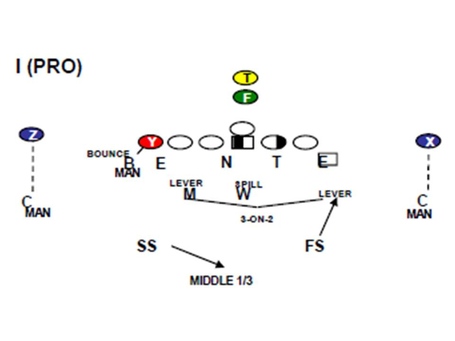
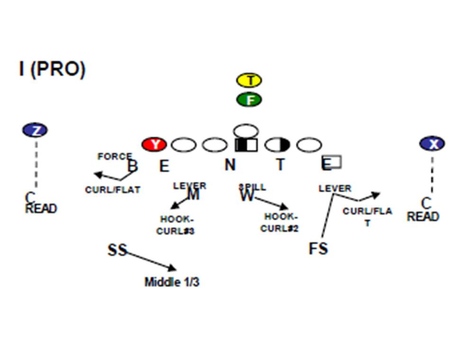
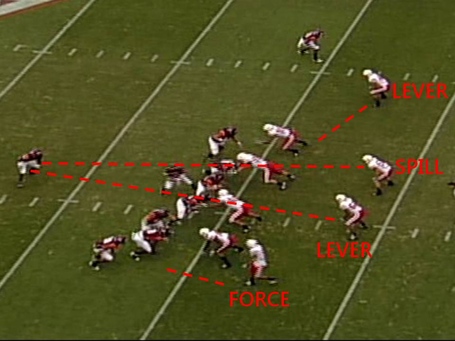


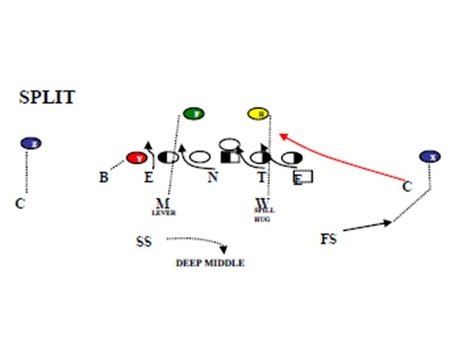
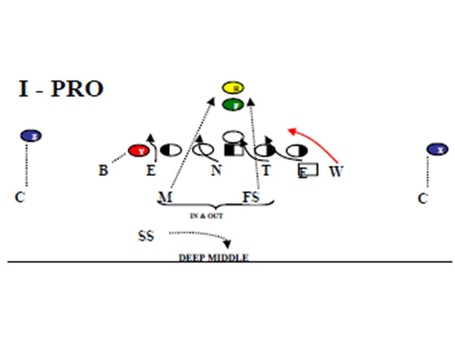



Wow......yet another superb read. WooHOO!!
ReplyDeleteMy kind sir, I would be EXTREMELY grateful for your short impression so far of NU's defensive tackles. Maybe marginally better than last year?
Obviously Gregory & McMullen are good DEs but what's your take on Valentine & Collins? How about Williams?
Haha....oh sir, of course if you're too busy for a replay that's just fine. I just bloody "love" your website and an thrilled to have found it. Truly sensational!
Also, I know it can't be a fun year for you with the Wolverines having problems in River City but they'll be back. Hang tough & again.....thank you!
Doug
Yeah, so this post was originally written in the Summer of '13. If you remember way back to the '12 season, Nebraska was having a lot of issues stopping the run, so Pelini was doing some things with scheme to try to help it out.
DeleteObviously, over the course of the last two years it has improved. Started off rough in '13 but consistently got better to where it is today. If you read some of my more recent coaching points you'll see that I'm a big fan of Collins and think he's doing a very good job. Valentine and some of the other DTs need to be a bit more consistent, but they show flashes.